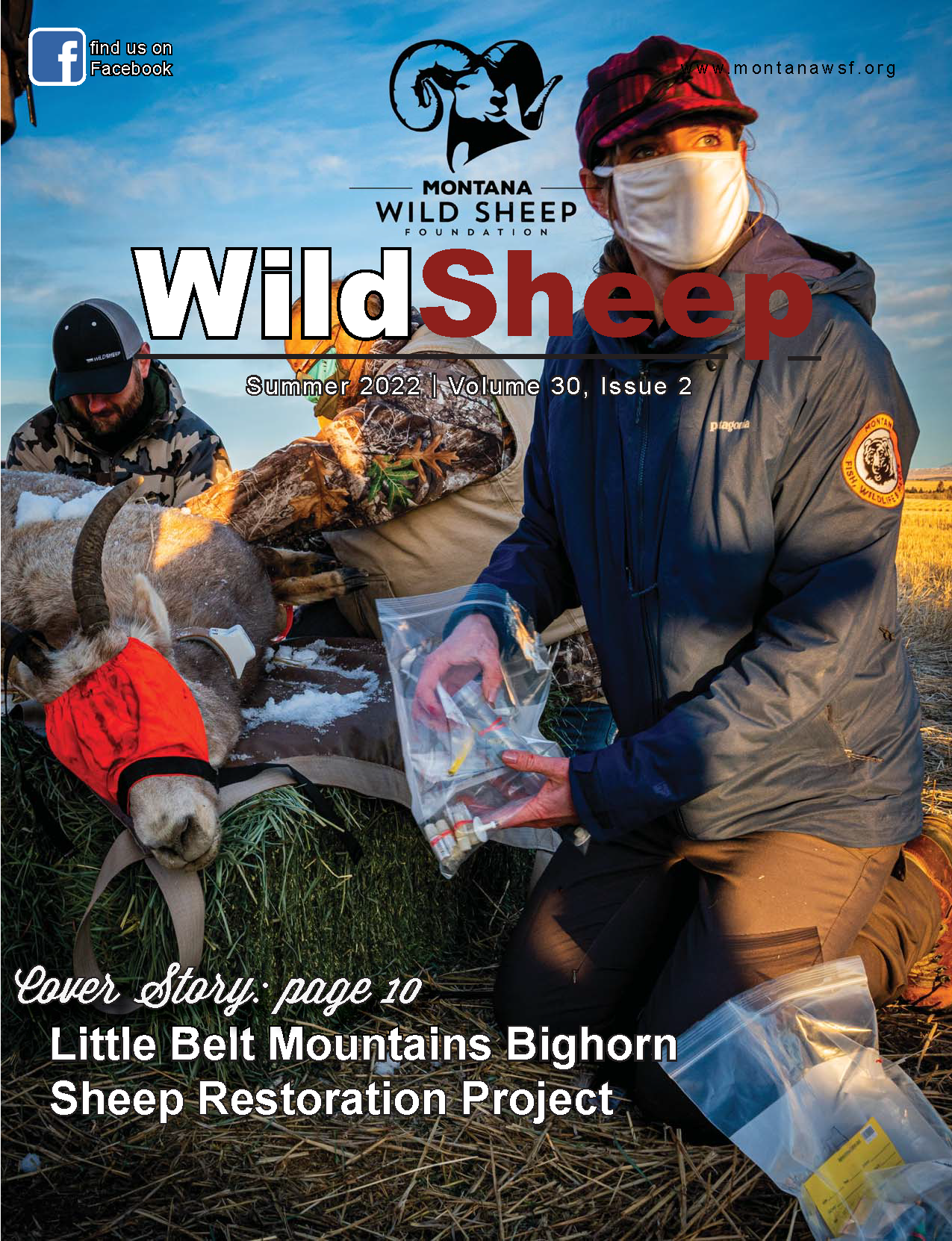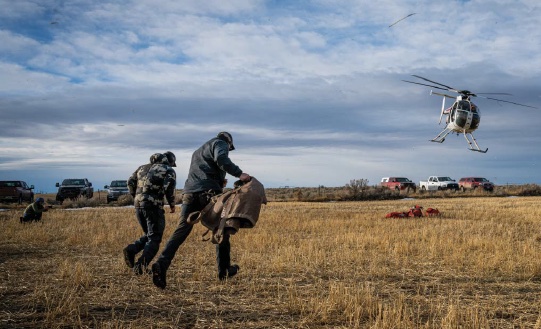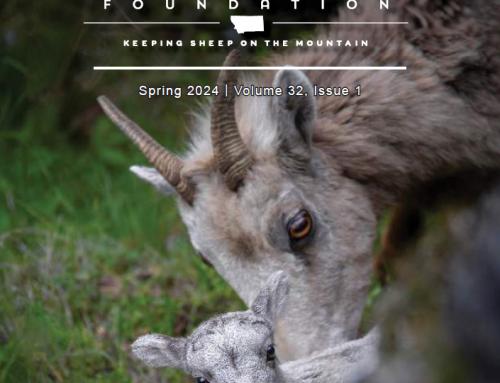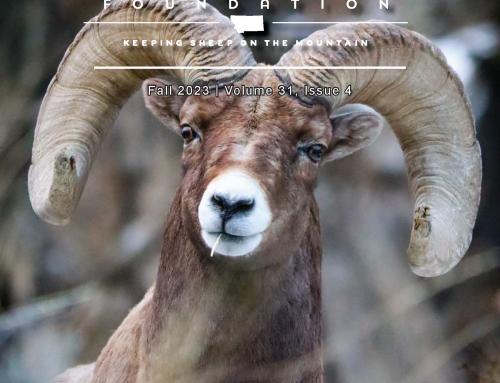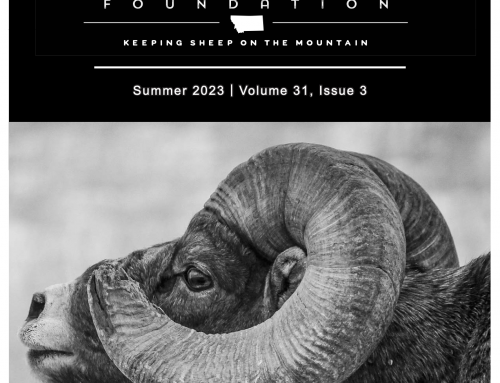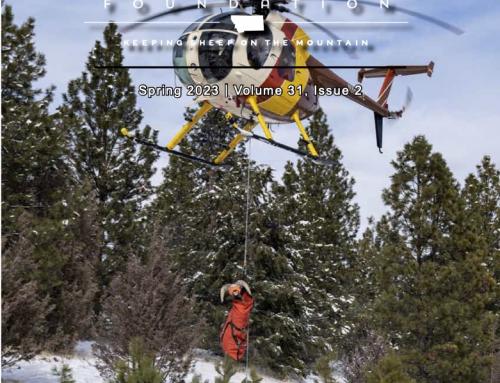Happy Spring to all of you! The snow is melting in the high country and green grass has taken hold over Montana again. The mild spring weather brings a smile to my face each morning when the sunrise peeks over the mountains. I felt this same sense of warmth this February when we all gathered in Butte for the 30th Annual Montana Wild Sheep Foundation (MTWSF) Banquet and Fundraiser.
I am happy to report that this year’s fundraiser was a smashing success! We had record attendance and broke fundraising records yet again. I hope you all had a great time and congratulations to those who won raffles and auction items. The generosity of our members, donors, and sponsors has put MTWSF in a strong financial position to do more for wild sheep in Montana.
Now more than ever, MTWSF is poised to answer the call to help wild sheep in Montana. As you have likely heard, the Little Belts Transplant has experienced a setback. A disease event has resulted in high mortalities of wild sheep transplanted in December of 2021. Montana Fish, Wildlife and Parks (MTFWP) Biologist Jay Kolbe has written a full report, which can be found later in this newsletter. MTWSF plans to offer its support to Montana FWP at both a project level and through the research initiatives that Kurt Alt explains in his article. MTWSF is committed to improving the resilience of our wild sheep populations and we are excited about the potential these research projects have.
The Montana bighorn sheep draw results were recently posted for the 2022 season. Congratulations to all those that drew! I look forward to hearing your success stories this fall. If you didn’t draw, you still have a chance to
go sheep hunting this fall. You can purchase a raffle ticket for a Desert Sheep Hunt at our website. If you have already purchased one, buy another! The drawing will be held in July.
We have sent this newsletter to all successful bighorn sheep applicants as an introduction to MTWSF. If you are not yet a member of our organization, please join us. MTWSF’s mission is to improve wild sheep density in Montana. As you will read in this newsletter, we strive to make a positive impact on wild sheep and our hunting heritage. Please join as a regular or life member to pay your good fortune forward.
D.J. Berg
Montana Wild Sheep Foundation President
dj@montanawsf.org
(406) 366-1849
Highlights from this Issue
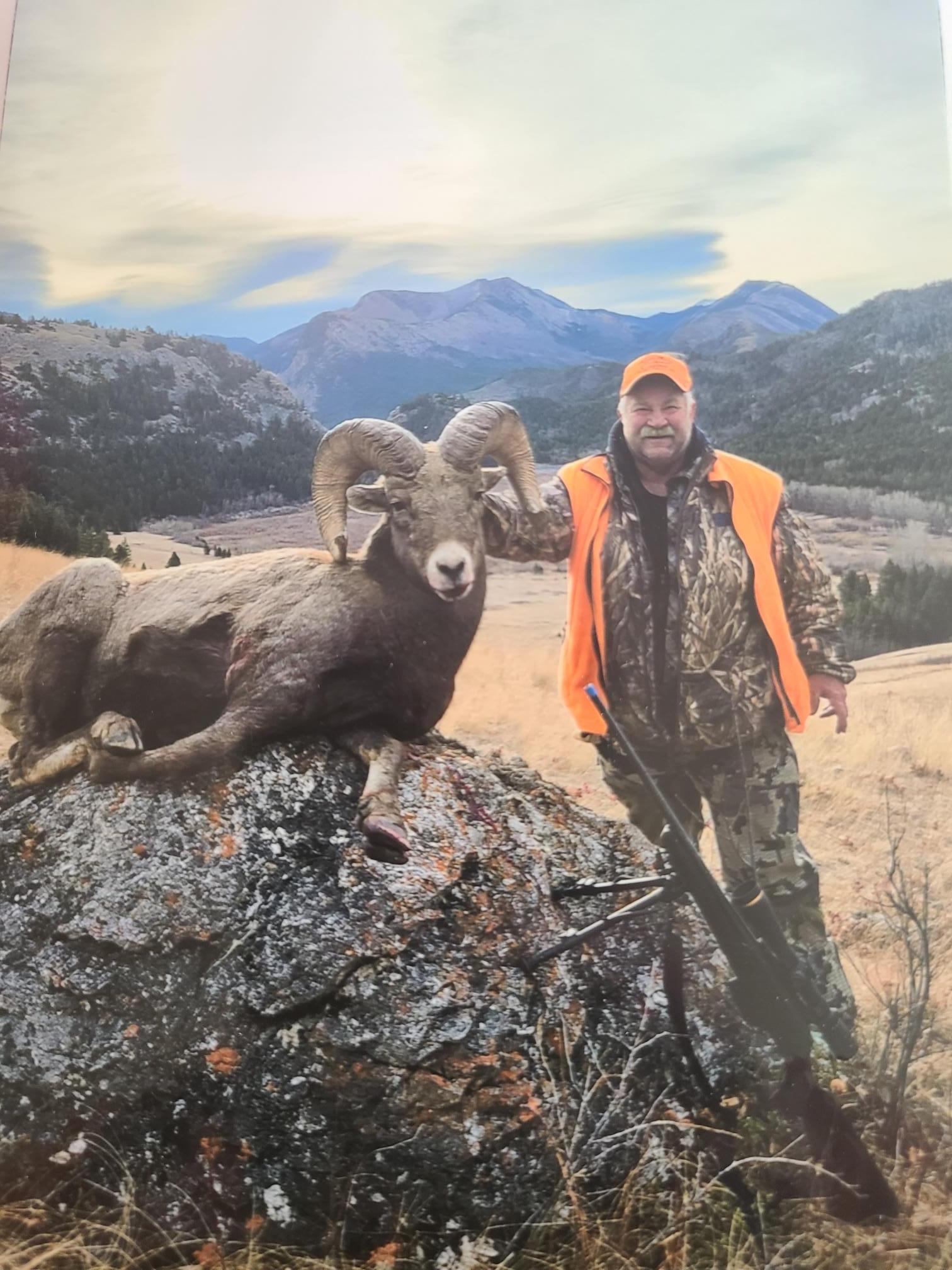
The Hunt of a Lifetime
Story by: Jim Marsik
As a lucky Montana hunter, I received a sheep tag August 2021 for the Rocky Mountain Front, Augusta, MT. One of only two tags for Gibson Dam North area# 423. To start with, I am 69 years old, and have applied for tags for 41 consecutive years for the sheep, moose, and goat. There are no roads to drive to hunt, you must go in on foot. It is from the parking lot into the mountains of the back country trails of the Bob Marshall. We tried to scout the areas, talk to the residents, game wardens, biologist, guides, everyone who knows anything of that area. We went up five times in this area. Everyone said that the sheep were all the way in the back due to the mild winter. That’s 6.5 miles one way. For younger people that’s more doable. It starts off Mortimer Gulch 1 mile up and 2 miles back. Then Big George 2.5 miles past, then finally leading into Reclamation Flats making it a total of 6.5 miles. Reclamation Flats starts 2.5 wide and 8 miles deep. All this I did with my two 30 yr old sons. We did the Mortimer Gulch and Big George each 2 times. That a lot for an old horse like me. They all said wait till middle of November since they males go into rut at that time. We all did our homework, bought new Kuiu clothing which is wind and water resistant. This with good boots, walking sticks, lightweight tents, food, & lights. Next, we asked everybody we know with horses which wasn’t looking good. Finally, we had friends to come along with 6 horses. We now had 6 people, 6 horses, which meant more stuff. I was lucky I surrounded myself with 5 young, strong 30 old hunters. Two sons, a nephew visiting from Colorado with out of state tags, friends, Zack Gregoire & Darren Bonson, who had the stock.
Read the whole article in our Wild Sheep Newsletter, Summer 2022.
Science Corner: Little Belt Mountains
Bighorn Sheep Restoration Project
Article by Jay Kolbe, Wildlife Biologist, FWP, jkolbe@mt.gov
Photos by Jasper Poore
Introduction
Bighorn sheep restoration in the Little Belt Mountains began with an initial release of 50 sheep into the South
Fork Judith River (5M, 45 F) in December, 2020. All of these sheep were captured in HD482, south of the River
in the Upper Missouri River Breaks. In December 2021 an additional 33 sheep were captured in HDs 482 and
680 (north of the Missouri River) and released in the same area. All translocated sheep were fi tted with GPS collars
that allow remote monitoring of sheep movements and that alert biologists of any mortalities.
Habitat Use
Bighorn have generally used high quality sheep habitat on public lands (mainly USFS). The new sheep herd’s
range extends roughly from Sage Creek in the north, then south and east to Buffalo Canyon (west of Judith
Gap) along the eastern front of the Little Belts. Sheep translocated in 2021 were released in the same area and
have used the same habitat features as those from the original 2020 release. Interestingly, we haven’t yet seen
a signifi cant difference in winter and summer habitat selection or evidence of an annual seasonal migration.
There have been several notable movements of individual sheep this winter. One ewe released in 2021 almost
immediately traveled to the western Big Snowy mountains, where she remains. Several other ewes traveled
south over the Judith/Musselshell divide to high quality habitat patches in Daisy Dean, Haymaker, and Robert’s
Creek.
Read the whole article in our Wild Sheep Newsletter, Summer 2022.

